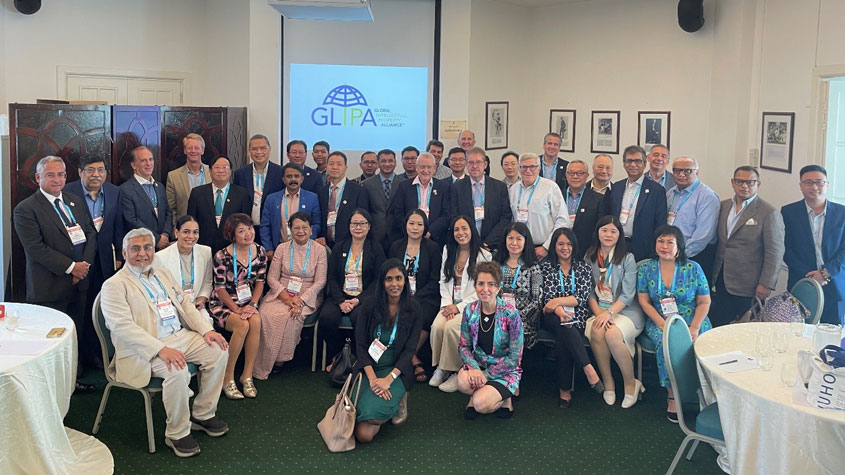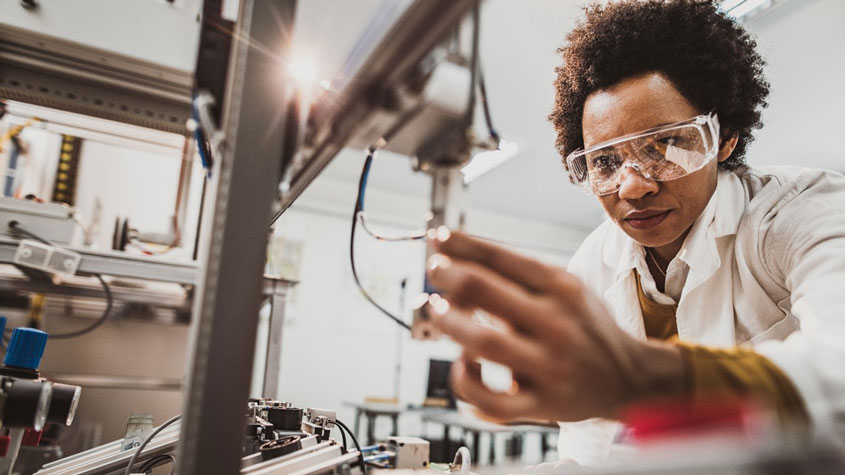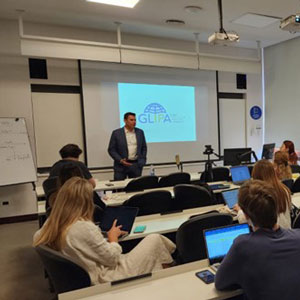
Closing the Gender Gap in Patents Across Latin America
By Maria Fernanda Hurtado, Executive Director, Global Intellectual Property Alliance (GLIPA) and Esteban Santamaría Hernandez, Director, CAIINNO, Mexico and GLIPA Board Member
Just over a year ago, we formed the Global Intellectual Property Alliance to build a world in which IP enables all people to improve their lives and create a more prosperous and sustainable future. While formally established in the USA, GLIPA is now working in Africa, Asia, Europe, Latin America and North America. Our mission is to attract more and diverse groups of users to the intellectual property system. Through our education and awareness programs, and by collaborating with leading actors in the IP and innovation ecosystem, we are working to draw new users to the IP system, and to equip them with the knowledge and skills they need to use IP rights to support their business goals.

In line with these objectives, in 2023, the GLIPA Latin America (LATAM) Chapter and the Mexican Think Thank, CAIINNO, began working to get a clearer view of the participation levels of women in the IP system, specifically, in the field of patenting in Brazil, Chile, Colombia, and Mexico.
Our mission is to attract more and diverse groups of users to the intellectual property system.
The gender gap in IP is a global problem
The gender gap in the use of the IP system is not confined to any single country or region; it is a global phenomenon. A recent study by WIPO, which offers an international comparison of the gender gap in global patenting between 1999 and 2020, finds that women participated in just 23 percent of all patent applications, representing 13 percent of the inventors listed, in that period. According to the study, if current trends continue, gender parity in patenting in Latin America will only be achieved in 2068, seven years later than the current global gender parity forecast of 2061.
If current trends continue, gender parity in patenting in Latin America will only be achieved in 2068.
In Brazil, Chile, Colombia, and Mexico, GLIPA and CAIINNO’s work offers greater clarity on the role that women play in the invention process in those countries. The data also considers regional and communal levels.
| Year | % of patents filed by male inventors only | % of patents filed by female inventors alone | % of patents filed by mixed teams of at least one woman and one man |
|---|---|---|---|
| Brazil | |||
| 2017 | 82.0 % | 7.2 % | 10.8 % |
| 2022 | 72.4 % | 5.8 % | 21.8 % |
| Chile | |||
| 2017 | 79.5 % | 8.3 % | 12.1 % |
| 2022 | 67.3 % | 7.4 % | 25.3 % |
| Colombia | |||
| 2017 | 63.6 % | 10.5 % | 25.9 % |
| 2021 | 62.9 % | 6.6 % | 30.5 % |
| Mexico | |||
| 2017 | 56.6 % | 5.3 % | 38.1 % |
| 2022 | 44.9 % | 5.4 % | 49.7 % |
Table 1: Percentages of patent granted by inventors, including men, women and mixed teams in Brazil, Chile, Colombia and Mexico.
Table 1 shows that from 2017 to 2022 the use of the patent system by both men and the already small number of women inventors obtaining patents fell in Brazil, Chile, Colombia and Mexico. Interestingly, however, the rate of patenting by mixed teams shows a significant increase in women’s participation. While this trend is promising, there is still a sizeable gap in women’s participation in the patent system compared to men. This is a gap that we need to narrow.

Ways to narrow the gender gap: Findings from GLIPA and CAINNO
The GLIPA/CAIINNO study highlights four key actions to help Latin American countries reduce the gender gap in patenting, as follows:

like this training at the University of San Andrés in
Buenos Aires, Argentina, GLIPA is drawing new users
to the IP system and equipping them with
the knowledge and skills they need to use IP rights
effectively. (Photo: Courtesy of GLIPA)
- Closer collaboration with organizations like WIPO to support efforts to overcome bottlenecks and standardize the collection of IP data, especially with respect to gender, from IP offices around the world.
- Better and easier access to these data will help to establish a clear picture of how the IP system is being used around the world and by whom. It will also help ensure the development and implementation of effective policies and strategies to encourage greater participation in the IP system by more diverse groups, including women. This is important, because such participation will enrich the pipeline of available technologies, thereby maximizing our chances of achieving sustainability goals and addressing the unprecedented challenges facing humanity.
- Reaching out to women inventors and actively encouraging them to engage with the IP system is crucial. This requires close collaboration among all those who influence the IP landscape, including government, business associations, civil society such as CAIINNO and GLIPA, local innovators and others.
- We also need to rethink IP education. This involves moving beyond seeing IP exclusively as a technical legal field, and broadening our approach to ensure IP is seen as a practical toolkit for inventors, creators, and entrepreneurs to translate their ideas into thriving businesses. To achieve this, we need to encourage universities to focus on IP skills building and entrepreneurship. We also need to start teaching children about IP at school. This will give them a solid grasp of the principles of the IP system and a better understanding of the role IP can play in enabling them to achieve their ambitions.
As GLIPA celebrates its first anniversary, we look forward to maintaining the momentum we have built, and the progress made in breaking down barriers to accessing IP. On World Intellectual Property Day 2024, we celebrate the world’s innovators, creators, and entrepreneurs. And we invite anyone interested in joining forces with us to help bridge the gender divide in innovation and IP and improve our chances of achieving a sustainable future. Find out more about our movement on GLIPA website.
Together we can take steps to support the development of a more inclusive and diverse IP system that fosters the innovation we need to build our common future.
The WIPO Magazine is intended to help broaden public understanding of intellectual property and of WIPO’s work, and is not an official document of WIPO. The designations employed and the presentation of material throughout this publication do not imply the expression of any opinion whatsoever on the part of WIPO concerning the legal status of any country, territory or area or of its authorities, or concerning the delimitation of its frontiers or boundaries. This publication is not intended to reflect the views of the Member States or the WIPO Secretariat. The mention of specific companies or products of manufacturers does not imply that they are endorsed or recommended by WIPO in preference to others of a similar nature that are not mentioned.